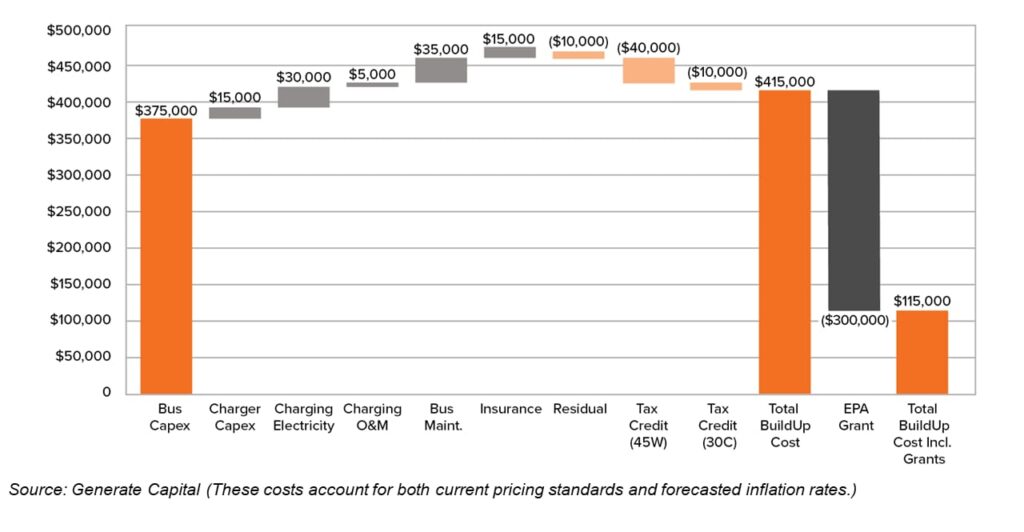DOWNLOAD
Submit the form below to continue your download
SUCCESS
Your download will begin shortly
BIO
Ryan Miller is a Principal at Generate Capital, overseeing investments in power, digital infrastructure, and transportation.
With over 10 years of experience in renewable energy and infrastructure investing, Ryan has been involved in over $5 billion in sustainable infrastructure transactions. Prior to joining Generate in 2021, Ryan was a Strategic Business Development Advisor at Shell New Energies, focusing on onshore renewable power project acquisitions and development partnerships. Prior to Shell, Ryan worked on JP Morgan’s tax equity team where he structured and executed complex tax equity transactions. Earlier in his career, he held various positions in banking and capital markets. Ryan holds a B.S. in Finance from Virginia Tech and is a CFA charterholder. He is based in Generate Capital’s New York City office and is an active member of the LGBTQIA employee resource group.
Supporting the electrification of school buses
Across the US, school districts are choosing to electrify their school bus fleets. Electric school buses offer sizable health and environmental benefits, improving air quality and reducing noise pollution for students while cutting greenhouse gas emissions and serving as valuable grid resources.
Expert View By Ryan Miller and Berk Manav
BIO
Ryan Miller is a Principal at Generate Capital, overseeing investments in power, digital infrastructure, and transportation.
With over 10 years of experience in renewable energy and infrastructure investing, Ryan has been involved in over $5 billion in sustainable infrastructure transactions. Prior to joining Generate in 2021, Ryan was a Strategic Business Development Advisor at Shell New Energies, focusing on onshore renewable power project acquisitions and development partnerships. Prior to Shell, Ryan worked on JP Morgan’s tax equity team where he structured and executed complex tax equity transactions. Earlier in his career, he held various positions in banking and capital markets. Ryan holds a B.S. in Finance from Virginia Tech and is a CFA charterholder. He is based in Generate Capital’s New York City office and is an active member of the LGBTQIA employee resource group.
Substantial federal grant funding, an increasing volume of policy mandates, and mounting pressure from parents, teachers, students, and communities for schools to decarbonize underpin the market.
Through the lens of an investor, school buses are prime candidates for electrification: bus routes are predictable and almost always fall within the range offered by EVs available today, most existing bus yards have ample space for charging infrastructure, unused energy from electric school buses can be monetized by being fed back to the grid which boosts overall grid reliability, and the funding available to help subsidize electric school buses is a result of a growing public demand for them.
Yet districts transitioning to electric buses face three persistent barriers to adoption: cost, complexity, and uncertainty. They must navigate sizable capital expenditures, technical and bureaucratic hurdles, and a bevy of market uncertainties that fall well outside their usual purview.
With the right strategy and partners, however, school systems can overcome these hurdles. Working with fleet electrification-as-a-service (FaaS) providers helps to simplify and accelerate the electrification process.
For example, the significant upfront capital required for electric school buses makes the purchase impossible for many resource-constrained public school districts. A partner providing FaaS can make the cost of electrification not only viable for school districts, but attractive, by converting capex to opex and helping the schools access grant funding.
This support is key, as the availability of grant funding – particularly EPA funding – completely upends the cost comparison between electric school buses and their diesel counterparts today. At Generate we currently estimate the total lifetime cost of an electric school bus to be approximately $115,000. First, we sum all the associated costs, including capital expenditures of about $390,000 for the school bus and L2 charger. We then layer in school districts’ opportunities to access funding and reclaim value, through tax credits and the $300,000 in EPA grant funding.

By contrast, Generate estimates the current total cost of ownership (TCO) of diesel buses to be $345,000. These TCO models reveal that electric school buses can already serve as cheaper alternatives to diesel-powered fleets, though this hinges on a school district successfully accessing EPA grant funding. Looking ahead, while diesel bus costs are expected to remain steady, we expect the price of electric fleets to decrease sharply in the next several years. The current high volume of grant funding essentially serves as a near-term stopgap ahead of an impending, and enduring, market-based approach. The grants help the electric school bus industry scale, and scale in turn drives down costs.
By 2030, we forecast that capital expenditures for electric school buses will decrease and the likely price range of V2G benefits will account for a value similar to the existing 45W tax credit, making electric fleets cost competitive with diesel ones without government funding by the end of the decade.
Generate: Intelligence’s new whitepaper, “Accelerating Electrification of School Bus Fleets,” combines our team’s proprietary research and market analysis to explore the state of the school bus fleet electrification market, including its drivers, its impediments, and the FaaS model that can unlock its scale. Read the whitepaper here.
More insights
Why the infrastructure transition needs creative credit
Private credit has stepped in to help fill some of the biggest gaps in our capital markets in recent years.
Read moreAn Inflection Point for LCFS
LCFS: California’s Low Carbon Fuel Standard (LCFS) program catapulted the state’s decarbonization progress, but policy updates are needed for the program to remain a critical market creator for decarbonization technologies.
Read moreComfort in the chaos
The policy drivers for the energy transition are new enough that this kind of disruption sparks questions about the durability of the capital, projects, technology development, and deployment of the infrastructure we need to decarbonize in the event of a political shift. But while there are significant differences in the priorities for the energy transition across
Read more

